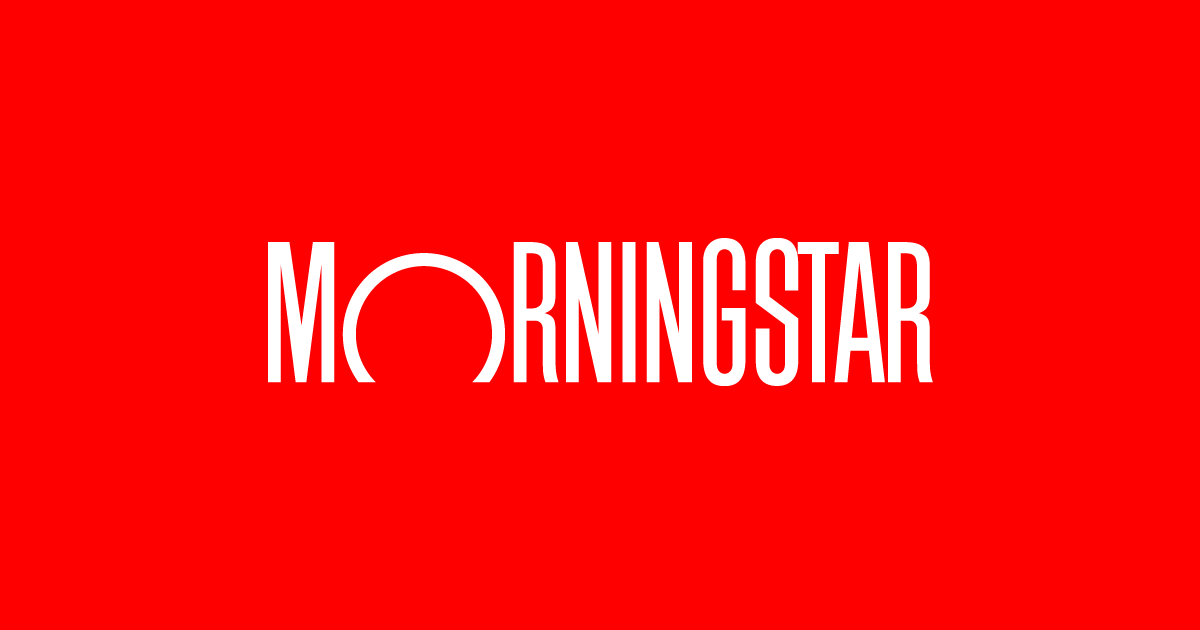By Philip van Doorn
This is the time to diversify your portfolio. Bonds have been safer than stocks this year, and a fund featuring monthly income can make it easier for you to wait out periods of market turmoil.
This year’s seesaw action in the stock market has emphasized two important concepts for investors: Diversification can lower your day-to-day risk, and income-producing investments can help you remain disciplined and avoid selling into a declining market.
If your investment portfolio has been highly allocated to the stock market, adding exposure to bonds will lower your overall risk while adding a steady income component. This can reduce price volatility while increasing your flexibility as the money rolls in. It can also help you to avoid making the common mistake of trying to time the stock market.
Paul Merriman recently explained how increasing your allocation to bonds might not lower the long-term growth potential of your investment portfolio by very much.
John D. McClain, a portfolio manager for corporate bond and high-yield strategies at Brandywine Global, discussed this year’s action during an interview with MarketWatch and provided an example of a high-yield bond with credit features that made it attractive for two of the firm’s funds.
Let’s take a look at year-to-date total returns, with dividends reinvested, for the S&P 500 SPX and for two bond funds managed by Brandywine Global, a unit of Franklin Templeton that oversees $58 billion in client assets:
The chart illustrates that reacting immediately to headlines, especially when the government policies that drive those headlines are subject to day-to-day changes, can cause you to lose money by locking in losses. The S&P 500 was down 15% for 2025 through April 8, but the year-to-date decline had been reduced to 5.7% through Friday. During periods of market weakness, any investor can panic and forget about the long-term objectives that led them to invest in stocks in the first place. The S&P 500 returned 25% last year, following a 26.3% return in 2023. That 2023 performance followed an 18.1% decline for the large-cap benchmark in 2022, as investors reacted to the Federal Reserve’s dramatic increase in short-term rates as the central bank tried to bring down the inflation rate.
The chart also shows how bonds can be a safer haven when the stock market is reeling.
McClain co-manages the $3.4 billion BrandywineGlobal High Yield Fund BGHAX BGHIX and the $2.3 billion BrandywineGlobal Corporate Credit Fund BCAAX BCGIX, which are both rated five stars (the highest rating) within Morningstar’s High Yield Bond fund category.
For each of these funds, the paragraph above includes the tickers for Class A and Class I shares. Both funds have sales charges of 3.75% listed in their prospectuses for Class A shares; however, these charges are waived for investors who purchase shares through major brokerage platforms such as Charles Schwab and Fidelity.
The funds’ Class I shares are available through investment advisers. The Class I shares may have high account minimums depending on the relationship between an advisory firm and Franklin Templeton. The Class I shares have lower expenses and therefore higher dividend yields, but for simplicity we will focus on the Class A shares here.
The BrandywineGlobal High Yield Fund quotes a 30-day yield of 6.59% for its Class A shares, which have annual expenses of 0.92% of assets under management. All yields and returns in this article are net of expenses. This fund was formerly known as the Diamond Hill High Yield Fund, which was launched in December 2015. The current fund acquired all assets and liabilities from the former fund when it was acquired by Franklin Templeton in 2021, with McClain and William P. Zox remaining as its portfolio managers. Jack W. Parker was added as a third manager of the fund in 2023.
A fund’s 30-day yield is a calculation mandated by the Securities and Exchange Commission. It is meant to provide a uniform way to compare yields of different funds. The two bond funds discussed here make monthly distributions, and based on the most recent monthly payout of the BrandywineGlobal High Yield Fund and the fund’s NAV (an open-ended mutual fund’s daily share price), the annualized distribution rate was 7.04% as of Friday’s close.
The BrandywineGlobal Corporate Credit Fund quotes a 30-day SEC yield of 6.09% for its Class A shares, with an expense ratio of 0.86%. The fund’s distribution rate at Friday’s close was 6.74%. This fund was formerly known as the Diamond Hill Corporate Credit Fund, which was established in September 2002. When Franklin Templeton acquired the predecessor fund in 2021, its assets and liabilities were acquired by the present fund, with no changes made to investment policies or the portfolio-management team.
Long-term performance
Both of these funds hold high-yield bonds, which are bonds with below-investment-grade credit ratings from Standard & Poor’s and Moody’s Rating Service. You can review S&P’s ratings hierarchy here and Moody’s here. In general, bonds are considered investment-grade if they are rated BBB- or higher by S&P, or Baa3 or higher by Moody’s.
When high-yield bonds are issued, they are usually marketed to institutional money managers. The combination of high interest payments and higher credit risk than investment-grade bonds make for an asset class ideally suited to active management, which runs counter to the industry trend toward lower-cost index funds over recent years.
The BrandywineGlobal High Yield Fund was 86.3% allocated to bonds with below-investment-grade ratings, or no ratings, as of March 31, with the rest of the fund in investment-grade bonds or cash. This fund’s effective duration was 2.88 years. Duration is a measurement of a bond’s price sensitivity to changes in interest rates, incorporating market values and time remaining until maturity. A duration of 2.88 years indicates that if interest rates rise by 1%, the value of the portfolio will decline by 2.88%, and vice versa.
The BrandywineGlobal Corporate Credit Fund takes less credit risk. It was 77% allocated to high-yield bonds as of March 31. Its effective duration was 2.52 years.
FactSet has total-return data for the BrandywineGlobal High Yield Fund (and its predecessor fund) going back to the end of 2015. Here is how it has performed in comparison with the the ICE BofA High Yield Index, the Bloomberg U.S. Aggregate Index of investment-grade corporate bonds and the S&P U.S. Treasury Current 10-Year Index:
For nine years and almost one month, the ICE BofA High Yield Index has outperformed the investment-grade corporate and the Treasury indexes, despite its higher level of credit risk. Again, these returns include reinvested dividends and any defaults on corporate bonds. And the BrandywineGlobal High Yield Fund has outperformed the ICE BofA High Yield Index by a wide margin, and that is after management expenses that the indexes don’t have.
The fund’s outperformance backs the notion that active management can be especially important in the high-yield space, because fund managers can conduct detailed credit analysis not only to avoid risk but to gain confidence that purchases of bonds that temporarily trade at deep discounts to face value will work out well.
Here are average annual returns for the fund and the three indexes over the past three and five years through Friday, with dividends reinvested, net of expenses for the fund and excluding any sales charges paid by the fund’s shareholders:
Fund 3 year average return 5 year average return
BrandywineGlobal High Yield Fund Class A 6.5% 7.7%
ICE BofA U.S. High Yield 5.9% 6.6%
Bloomberg U.S. Aggregate 1.6% -0.8%
S&P U.S. Treasury Bond Current 10-Year Index -0.4% -3.6%
Source: FactSet
A credit example
McClain said that the portfolios of both bond funds in this article were trading “below par” even before President Donald Trump announced his slew of “liberation day” tariffs on April 2.
A bond’s face value is the amount that will be paid when it matures or when it is called. This is known as par. If a bond is trading at face value, we say it is trading at 100, or par. A bond trading at a 1% discount to par is trading at 99 and a bond trading at a 1% premium is trading at 101.
So if you invest in this type of high-yield fund now, you have potential for capital gains as bonds mature. The two funds are managed a bit differently, with the BrandywineGlobal Corporate Credit Fund being the lower-risk play because of its higher credit quality and shorter duration.
“Credit quality is higher than it has historically been” within the high-yield space, McClain said. He added that before April 2, “we were trading inside 300 spread,” which means that on average, yields on high-yield corporate bonds were within 3% of yields on U.S. Treasury securities with similar maturities.
The yield-to-worst for the ICE BofA High Yield Index was 7.77% Friday, compared with a yield of 4.24% for 10-year U.S. Treasury notes BX:TMUBMUSD10Y. So the spread had widened to 353 basis points from 289 basis points at the end of 2024, when the ICE BofA High Yield Index’s yield-to-worst was 7.47% and 10-year Treasury notes yielded 4.58%.
Yield-to-worst means the lower of a bond’s yield to maturity or its yield to call, based on the call features, the face value and the current discount or premium to par.
“The market has, at a high level, appropriately repriced risk,” McClain said. “The defensive sectors, such as healthcare and cable (including other media), have held up better than cyclicals, such as gaming and energy.”
(MORE TO FOLLOW) Dow Jones Newswires
04-28-25 1355ET
Copyright (c) 2025 Dow Jones & Company, Inc.





